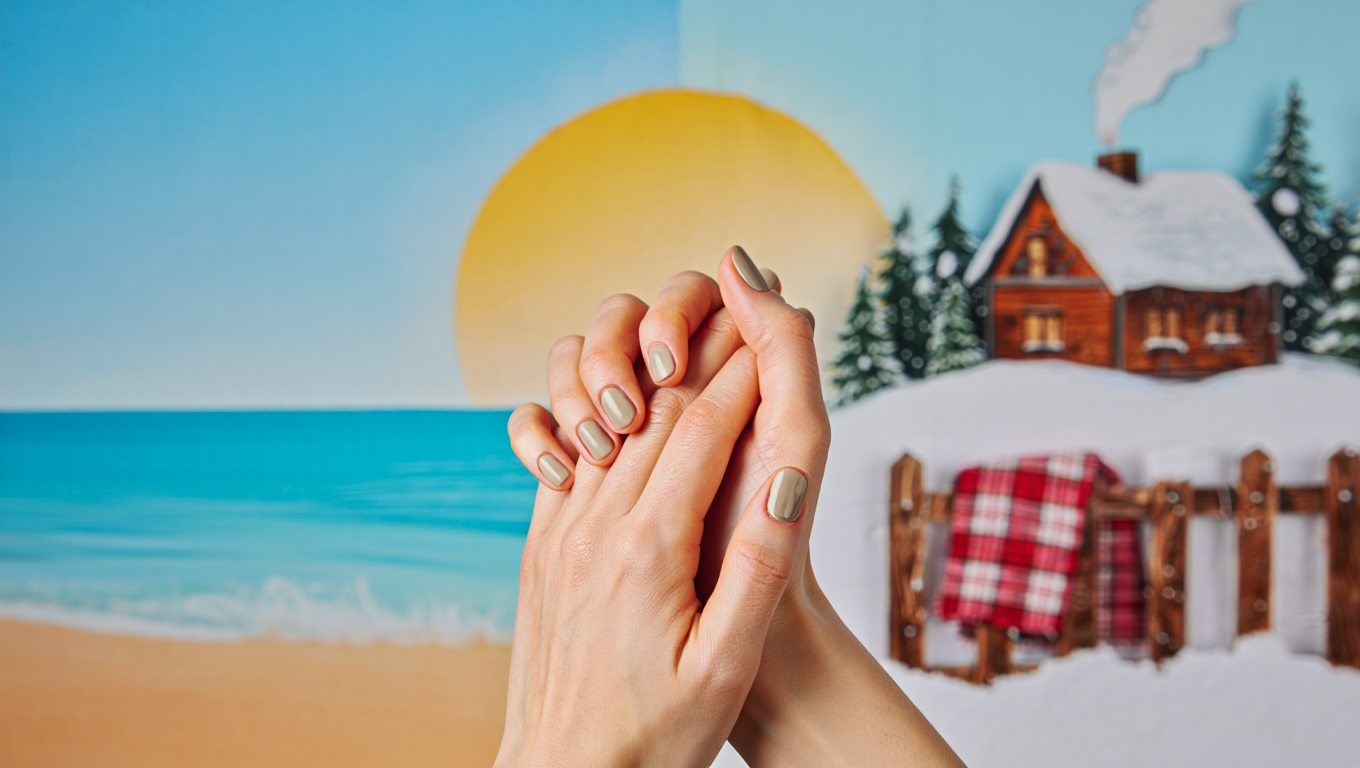Seasonal changes hit nails in different ways. Sun, sweat, salt, cold, and dry indoor air all push the plate and surrounding skin. Guesswork wastes time and money for many readers. A focused routine adapts to weather, light, humidity, and daily habits. That adaptive routine is what people call seasonal nail care tips.
Here, the phrase means a practical system that shifts with climate and habits. It includes plate care, cuticle support, and skin protection. It also covers polish choices, removal methods, and salon hygiene. These anchors—UV, sweat, saltwater; dry air, cold, heater indoors—guide every adjustment. At the end of this article, readers can download a practical seasonal nail care checklist to keep routines simple and effective all year.
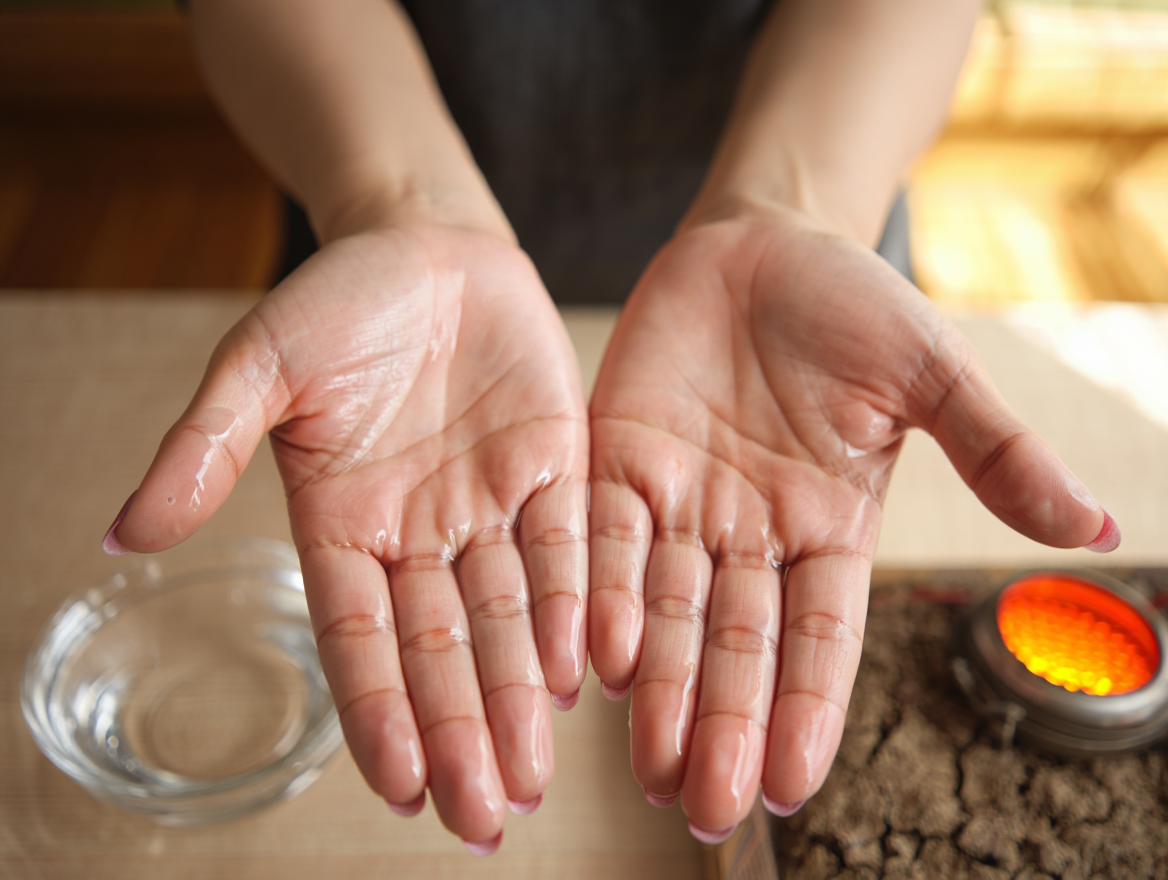
Why seasons matter for nails
Nails look hard, yet they act like a porous shield. Keratin layers swell and contract with water changes all year. That movement stresses edges and weak points. Small daily choices reduce that stress when matched to conditions.
Biology behind seasonal shifts
The environment drives water exchange and lipid balance across the nail folds. Low humidity ramps up transepidermal water loss in surrounding skin. That sets up rough cuticles and peeling edges by late winter. Heat speeds sweat and leaves salt residue on the surface. Routine updates built from seasonal nail care tips help keep layers steady.
Match nail habits to climate first, then to style.
Readers often ask whether nutrition can overpower climate. Diet supports growth, but daily exposure still rules. A balanced plan targets humidity, UV, and cleansing. That approach protects structure during long months indoors.
What changes to watch
Notice dullness after beach days and brittleness after frequent washing. Track ridging in late winter and lifting after long baths. Keep a simple two-month log to find patterns. That record reveals triggers faster than guesswork alone.
People hear about biotin and hope for instant strength. Evidence exists but remains limited for general use. A clinician can guide dosing and safety when nails are very brittle. Most people gain more from consistent prep and removal routines.
A short wrap-up: Seasons change humidity and UV, which shift water balance and stress. Map triggers, then adjust the plan with clear steps that fit the calendar.
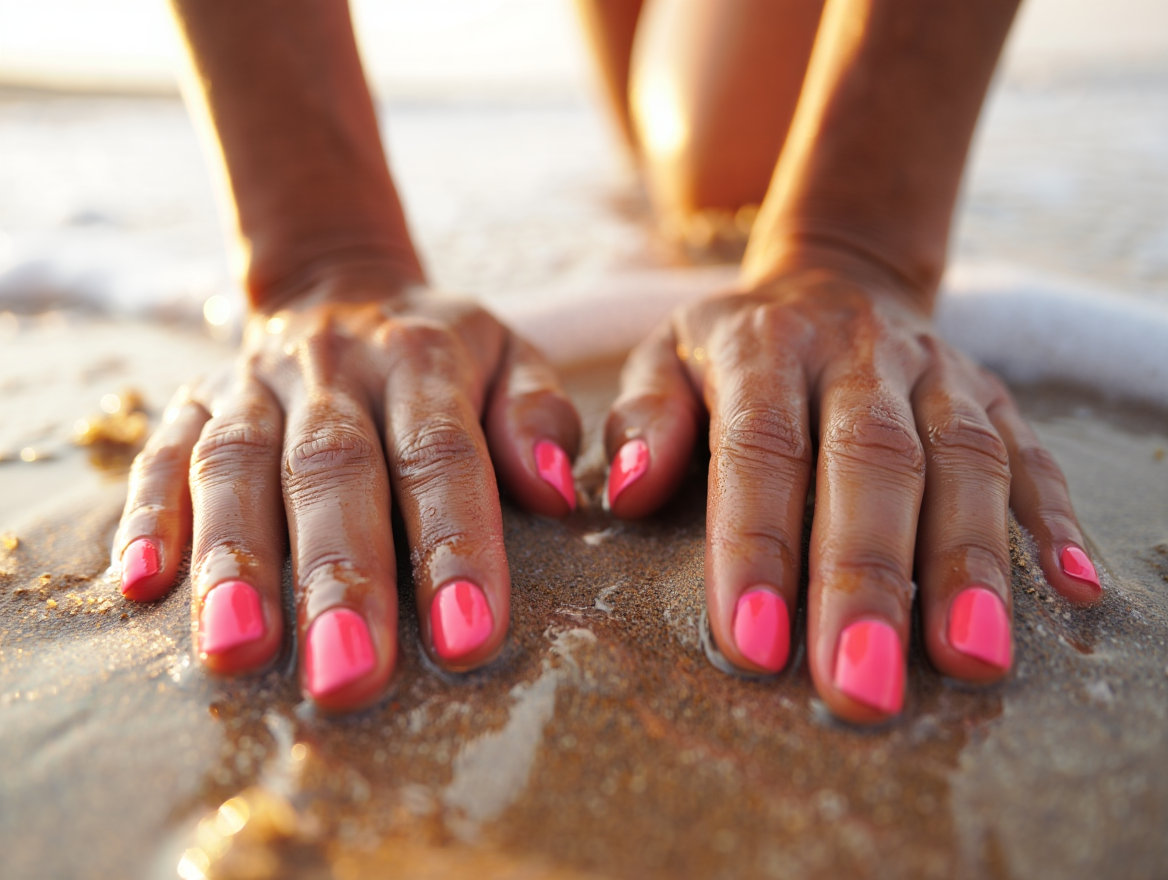
Summer nail challenges
Long days bring UV, heat, chlorinated pools, and ocean salt. Sweat changes skin pH and leaves residue on the plate. Sunscreen protects skin yet may slick surfaces for polish. Travel adds rushed removals and skipped oil.
- Rinse hands after ocean or pool sessions to remove salt and chlorine film.
- Pat dry, mist with water, then lotion to trap moisture on busy days.
- Set a reminder for evening cuticle oil after outdoor time.
- Use flexible topcoats that bend with heat-softened plates.
A University of California San Diego team reported DNA damage in skin cells after exposure to certain UV nail dryers. The lab data raised safety questions during frequent gel use and long summer schedules. That does not require panic, but it does call for protection and shorter sessions. Gloves that expose tips help reduce the dose during curing.
“Do not cut your cuticles; they are the nail’s natural seal.” — Dana Stern, MD, dermatologist
Salt residue is sneaky and pulls moisture away all afternoon. A quick rinse, a towel, and a small amount of oil within minutes stops that pull. Flexible films reduce chips when plates soften in heat. Careful timing matters after exercise and swims. Nail care seasonal tips keep summer edges calm without heavy products.
UV, sweat, saltwater
UV exposure fades color and stresses surrounding skin along the proximal fold. Sweat shifts pH and carries salt that roughens the plate surface. Saltwater pulls moisture from keratin and leaves chalky edges by night. A rinse-and-oil routine reverses that early. People using seasonal nail care tips see fewer chips by week two.
Many readers worry about gels during vacations. Safer practice means sunscreen on hands and fingerless UV gloves before curing. Shorter exposures lower cumulative dose through the season. Breaks between gel sets give the plate recovery time. That rhythm keeps styles wearable during long stretches of travel.
A quick summer takeaway: Clean off residue, seal moisture quickly, and protect during curing. Flexible topcoats and evening oil carry nails through heat without constant repairs.
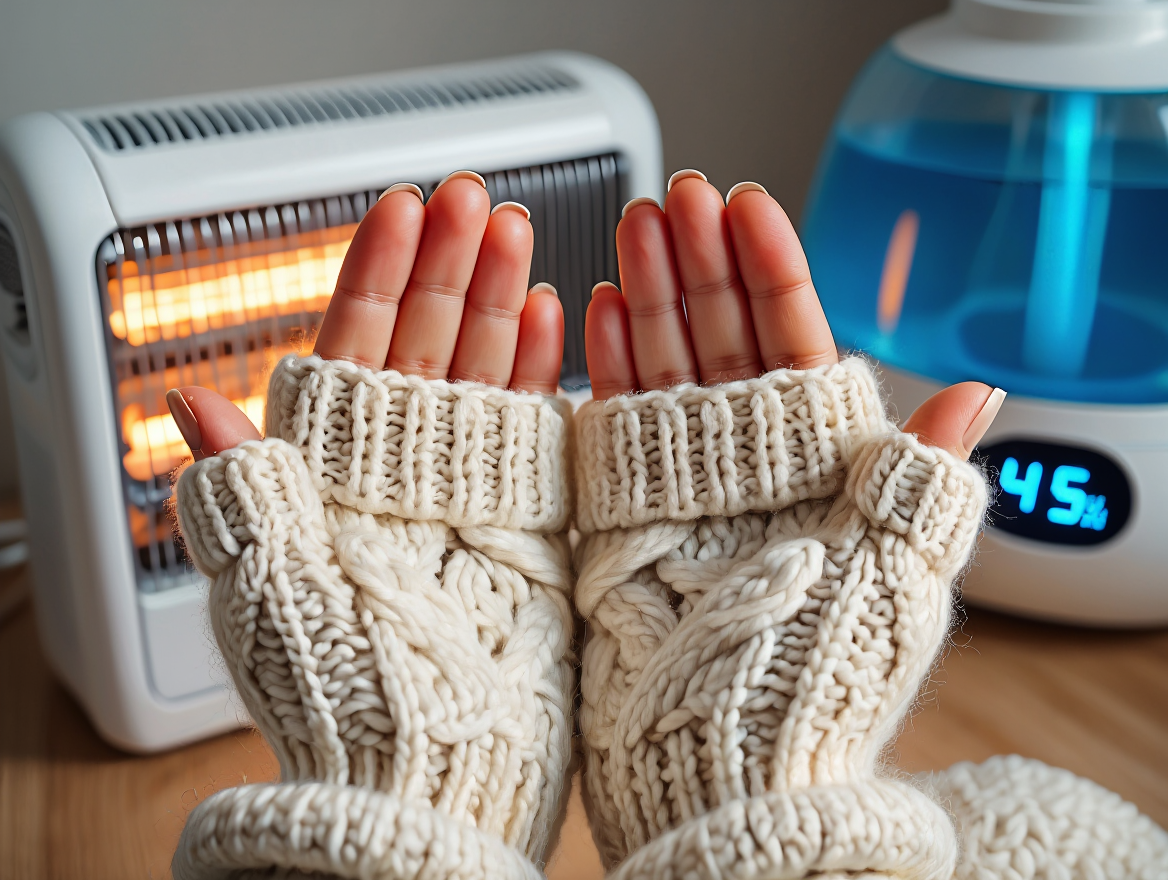
Winter nail challenges
Heating season drops indoor humidity sharply. Cold constricts blood flow to the matrix and slows growth. Hot water cycles strip lipids and weaken edges. Plates split while opening packages or pulling on sweaters.
An occupational study in the Netherlands linked frequent wet work with brittle nails and splitting in exposed groups (1992, Netherlands). The pattern worsened during cold months when people used hotter water for comfort. Shorter lengths and gentler cleansers reduced complaints across weeks. Small switches mattered more than aggressive treatments.
“Low humidity strips the barrier and accelerates water loss.” — Mona Gohara, MD, dermatologist
The fix starts with air, then occlusion. Emollients alone help, yet a thin balm over oil holds water longer. Indoor air targets the cuticle first, and that seal needs daily support. Readers who follow protecting nails winter methods report fewer tears by month’s end.
Dry air, cold, heater indoors
Below is a quick comparison to steer winter choices at home.
| Trigger | What it does | Fast response | Longer play |
|---|---|---|---|
| Dry air | Increases water loss at nail folds | Oil, then balm at night | Room humidifier at 40–50% RH |
| Cold | Slows blood flow to matrix | Warm gloves outdoors | Keep nails slightly shorter |
| Heater indoors | Lowers ambient humidity | Cream after washing | Switch to richer, fragrance-free cream |
Layer oil, then an occlusive balm every night for two weeks before judging results.
Most households do well near 45% indoor humidity. That range also cuts static and helps skin overall. A small bedroom unit handles winter air without fuss. A short daily check prevents surprise peeling in late February.
People often ask about polish choice in cold snaps. Dense topcoats resist scarf snags that lift edges. Shorter shapes reduce torque under gloves. A measured plan labeled nail care summer winter shows where length and coatings change by season.
A winter wrap-up: Fight low humidity with layered products and air support. Keep lengths sensible and maintain nightly occlusion for steady results.
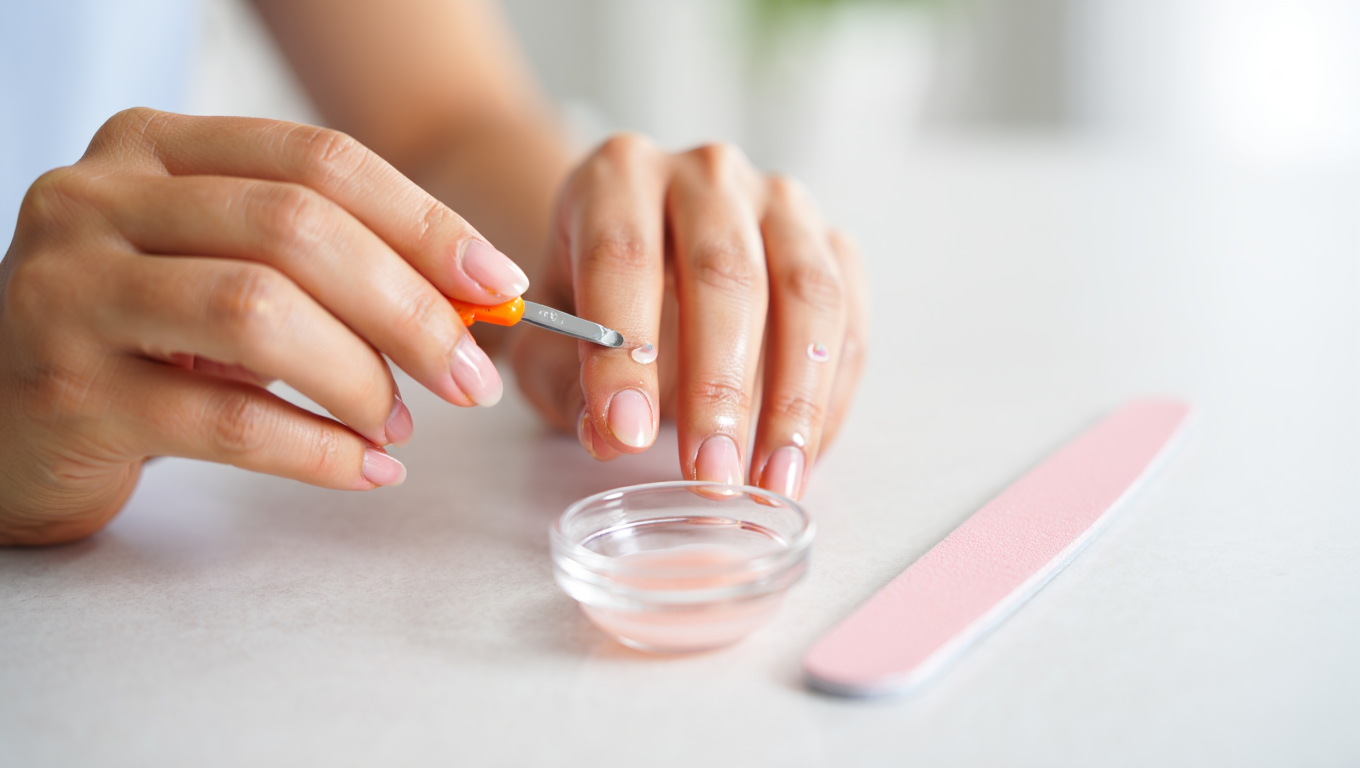
Seasonal manicure tips
Good technique saves weeks of work. Push, do not cut, the cuticle line during prep. Use acetone sparingly and buffer lightly only where needed. Seal edges with every coat to block lift along stress lines. Small habits compound with each set, and creating a relaxing salon atmosphere can make these steps feel more like self-care. You can find more inspiration for enhancing salon ambiance and interior design in this guide for salon owners.
“UV nail dryers emit radiation that can damage DNA in skin cells.” — Maria Zhivagui, PhD, researcher
A Swiss trial reported thicker plates after months of daily biotin in adults with brittle nails (1993, Switzerland). The trial was modest, and larger studies would help, but results remain encouraging for select cases. A clinician can help confirm need and dose. Focus on routine first while nutrition supports growth.
Many pros share nail care seasonal tips during prep, not after polish. List questions before the appointment and confirm removal steps first. Ask about ventilation and lamp types when gels are involved. Shorter cures and gloves that expose tips offer practical protection.
At-home prep routine
This routine supports natural nails and works before any polish. It also helps between salon visits when taking a break from gels.
- Wash with a mild, fragrance-free cleanser and pat dry.
- Mist hands with water and apply a light oil to the cuticle line.
- Massage for thirty seconds per nail and wait two minutes.
- Add a pea-size cream over each cuticle and let it absorb.
- Shape with a fine file in one direction only to avoid splits.
- Wipe with alcohol before base coat to improve adhesion and wear.
People often ask about supplements. Set realistic expectations and track progress with weekly photos. Food first works for most readers. Consistency still beats novelty in every season. Seasonal nail care tips keep routines grounded when schedules get busy.
A technique wrap-up: Gentle prep, smart filing, and layered moisture protect structure. Removal matters as much as application during long months.
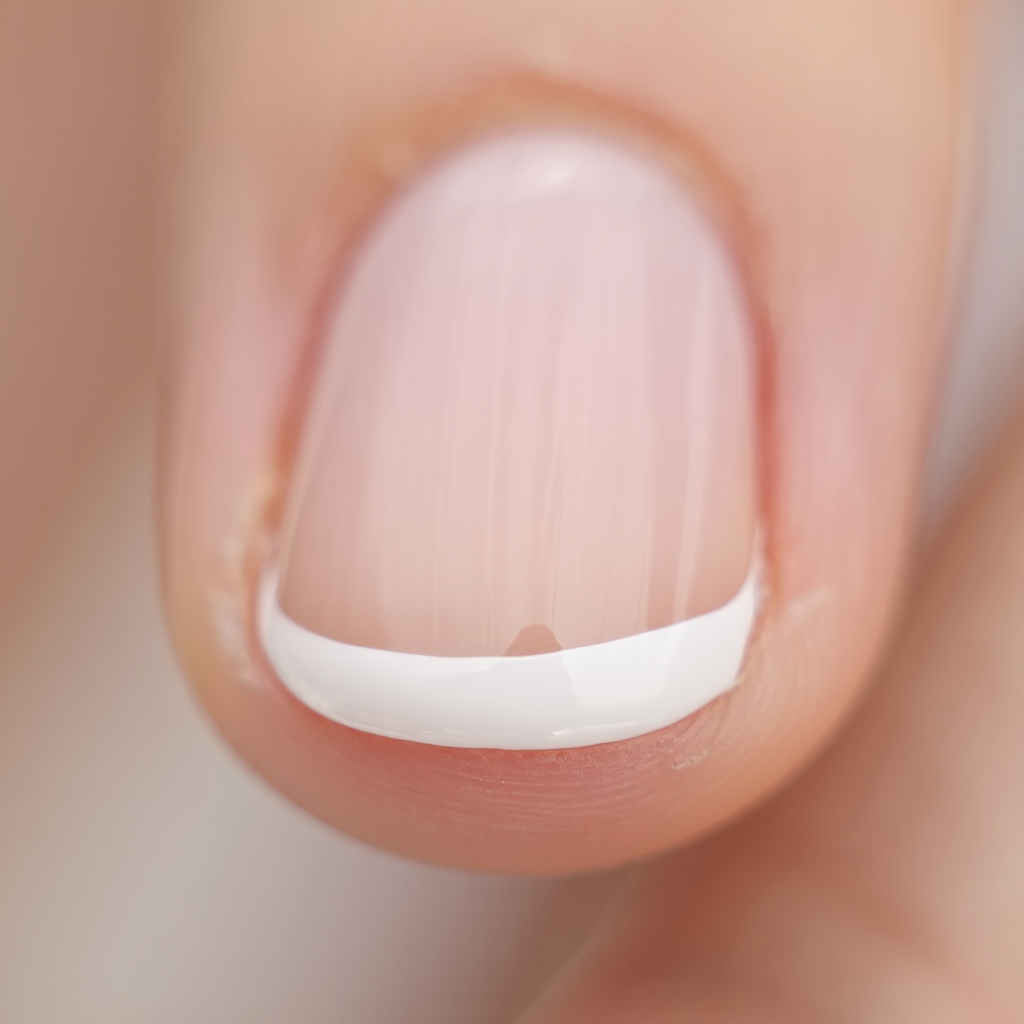
Protective treatments & topcoats
Protection is an everyday habit built from three ideas. Think film, flex, and seal during every application. Films reduce friction from daily tasks. Flexible polymers bend with temperature swings and cut lift. Edge sealing blocks chips along corners.
- Choose breathable base coats for hot months when sweat collects on the plate.
- Switch to denser topcoats in cold air to resist snags from fabric.
- Cap the free edge with every layer, including base and top.
- Wear gloves for dishwork and re-seal edges afterward with a thin layer.
A clinical review described improved outcomes when nails were hydrated first and then sealed with an occlusive layer during harsh climates (2019, Italy). The approach worked well for people who wash hands frequently at work. That layering also protected polish during long indoor periods. It saved time by reducing midweek repairs.
Match topcoat flexibility to climate—supple in heat, rigid in cold.
Salon hygiene deserves attention in every season. Ask how tools are sanitized and how removal is handled. Keep pure acetone for gel removal only and buffer with care. Smart protecting nails winter routines reduce corner cracks during heavy scarf use.
People ask about “slugging” for hands and nails. A thin layer of oil under balm at night improves comfort by morning. It also shields polish edges from fraying against sheets. That small habit pairs well with a room humidifier in cold months.
A protection wrap-up: Pick coatings for the season, cap edges methodically, and limit harsh removals. Guard polish with nightly occlusion when air is dry.
Hydration & nutrition seasonally
Hydration works in two steps. Add water, then keep it there. Oils feed the seal, and occlusives hold that water in place. Humectant creams fill gaps and support skin around the plate.
Summer adds sweat and residue after workouts and swims. Rinse hands, pat dry, then apply oil within minutes to trap water. A richer cream can wait until evening wind-down. Thoughtful hydrating nails summer plans keep cuticles neat without greasiness.
Winter flips the order during long indoor stretches. Warm water swells plates, then dry air strips moisture quickly. Apply oil first at night, then a thin balm to lock it in. A simple humidifier helps maintain balance by morning and supports nail care seasonal tips without complex products.
Nutrition still matters across both seasons. Protein supports keratin growth for steady thickness. Vitamin D often dips in winter, so a clinician can check levels when growth slows. Omega-3s help certain skin issues, yet nail data remain thin and mixed.
“Do not over-file the surface; thinning invites peeling,” — Dana Stern, MD, dermatologist
Researchers at UC San Diego reported DNA damage signals in skin cells after exposure to certain UV nail dryers, highlighting the need for protection during curing (2023, San Diego). Practical steps include gloves that expose tips and shorter sessions. Those small moves keep style while respecting safety. Readers appreciate solutions that fit daily life.
A hydration wrap-up: Sequence matters for moisture. Keep oil near the sink and balm on the nightstand. A steady plan labeled nail care summer winter keeps the routine simple during busy weeks.
Recommended schedules
Consistency beats intensity for long-term results. Build one plan for warm months and one for cold months. Keep the slots short, repeatable, and easy to remember. Small habits done often protect nails more than rare deep treatments.
Warm-month schedules focus on rinsing and flexible films. Quick care after beach or pool stops damage early. Night oil maintains the cuticle without weighing hands down. Practical seasonal nail care tips reduce chips during travel and outdoor training.
Cold-month schedules favor occlusion and indoor humidity. Aim for nightly oil plus a thin balm during heating season. Shorter lengths reduce torque from gloves and sweaters. Gentle removals prevent peeling when plates feel fragile.
A sample week helps people start without overthinking details. Choose two polish days and one deep treatment night. Adjust the rest to work, workouts, and family routines. Smart protecting nails winter habits keep edges tidy through long cold spells.
Warm-month schedule (example):
- Mon: Rinse after workouts; oil in the evening for quick recovery.
- Wed: File edges, apply breathable base, then a flexible topcoat.
- Fri: Rinse after beach time; add oil within five minutes for balance.
- Sun: Gentle removal, light mask, and a fresh coat for the week.
Cold-month schedule (example):
- Mon: Night oil, then a thin balm before sleep to seal moisture.
- Thu: Trim and shape slightly shorter to control winter snags.
- Sat: Dense topcoat refresh and precise edge capping.
- Sun: Check humidifier level and repeat oil plus balm routine.
Many readers see real gains from hydrating nails summer routines that pair rinsing with oil after outdoor time. That pairing holds moisture better than lotion alone. Consistency builds strength during long sunny stretches. The same rhythm supports results when travel schedules shift.
FAQ
How to choose between gel, regular polish, or bare nails in July?
Picking the right manicure in hot months depends on your daily plans, UV exposure, and how much maintenance you want. For active summer weeks with lots of swimming, regular polish plus a flexible topcoat works best. It allows easy touch-ups and avoids long curing times. Gel polish can last longer during vacations, but sweat, sunscreen, and saltwater often weaken adhesion.
Before curing gels, apply broad-spectrum sunscreen on hands and wear fingerless UV gloves. This simple move is one of the most practical seasonal nail care tips for sun protection. Bare nails can be ideal during intense travel since quick oiling and occasional buffing maintain a clean, healthy look. With smart nail care summer winter planning, switching between finishes becomes easier, and nails stay stronger all season.
Why do nails peel more in February?
Cold air outside and dry heated air indoors lower humidity drastically. This change pulls moisture from the nail plate and surrounding skin. As a result, layers separate more easily, leading to peeling and splitting. People often wash their hands with very hot water during winter, which strips away protective lipids.
To counter this, apply oil to nails and cuticles nightly, then layer a thin balm on top to seal in moisture. Keep a room humidifier at 40–50% humidity to stabilize indoor air. These protecting nails winter strategies rebuild flexibility and reduce brittleness. Many seasonal nail care tips recommend shortening nails slightly in February to minimize breakage. The combination of hydration, humidity, and smart trimming delivers noticeable improvements within weeks.
What is better for quick recovery after a long swim?
Chlorine and saltwater dehydrate the nail plate quickly, leaving edges chalky and fragile by night. The fastest recovery method starts right after leaving the pool or ocean. Rinse hands thoroughly with fresh water to remove salt or chemical residues. Pat them completely dry with a soft towel.
Within five minutes, mist hands lightly with water, then apply a thin layer of nourishing oil. This locks in moisture while the plate is still slightly damp. Later, add a light lotion or cream to restore skin elasticity. Consistently following hydrating nails summer habits after swimming prevents peeling and keeps polish looking fresh longer. Many nail care seasonal tips also suggest carrying a travel-size oil bottle for convenience on beach days.
How to protect cuticles without greasiness at work?
Many people avoid oils at work because they don’t want slippery hands. A smart routine solves this problem easily. Choose a fast-absorbing, lightweight oil and apply just a drop along the cuticle line. Gently massage it in, then layer a light, fragrance-free hand cream on top. This locks the oil in without leaving shine.
Do this right after washing your hands instead of random moments. Regular timing trains the skin barrier to stay hydrated, especially in offices with air conditioning or heating. This simple trick fits perfectly into nail care seasonal tips that emphasize hydration and protection during busy workdays. Over time, cuticles become smoother, and the nail plate resists cracking even in winter.
Why do salon gels sometimes lift in heat?
Gel polish can peel or lift during hot weather because sweat, natural oils, and sunscreen residues reduce adhesion. High UV exposure softens both the nail plate and the gel, increasing the chance of chipping. Long curing times with intense lamps also add unnecessary heat stress.
To fix this, thorough prep is key. Clean nails with alcohol before application to remove oils. Use breathable base coats during hot months and finish with flexible topcoats that can expand and contract with temperature changes. These seasonal nail care tips are especially helpful during vacations or humid summers. Following nail care summer winter guidelines, such as shorter cure sessions and UV protection gloves, keeps gels secure and glossy for weeks.
This video explains how to take care of nails in winter to protect them from dry air, cold, and moisture loss. It’s a great complement to the seasonal nail care tips shared in the article, offering practical winter nail care guidance and expert advice for keeping nails healthy during the colder months.
Conclusion
Seasons never stop moving, and nails feel every swing. A plan that follows climate, light, and humidity keeps structure steady. Small moves at the right times deliver the biggest gains. Start with one change this week, then add the next. Progress stacks fast when seasonal nail care tips guide choices across the year.
Before you leave, grab your printable checklist. It turns everything in this article into clear steps you can follow at home. You can stick it to your mirror, keep it in a planner, or bring it to the salon. This practical tool makes seasonal nail care tips easy to remember and helps maintain healthy, beautiful nails all year round.
